The Messum crater
December 2007
Over the last 130 million years or so a lot has happened to the Messum crater. South America has wandered off across the Atlantic and the hot bit under the ground that made this is still causing similar problems in Tristan da Cunha. We came here because we realised it was another long weekend and thought it would be nice to visit some flowers. And also because we thought that the central Namib desert might be the only place on the planet where we could escape the Christmas decorations.
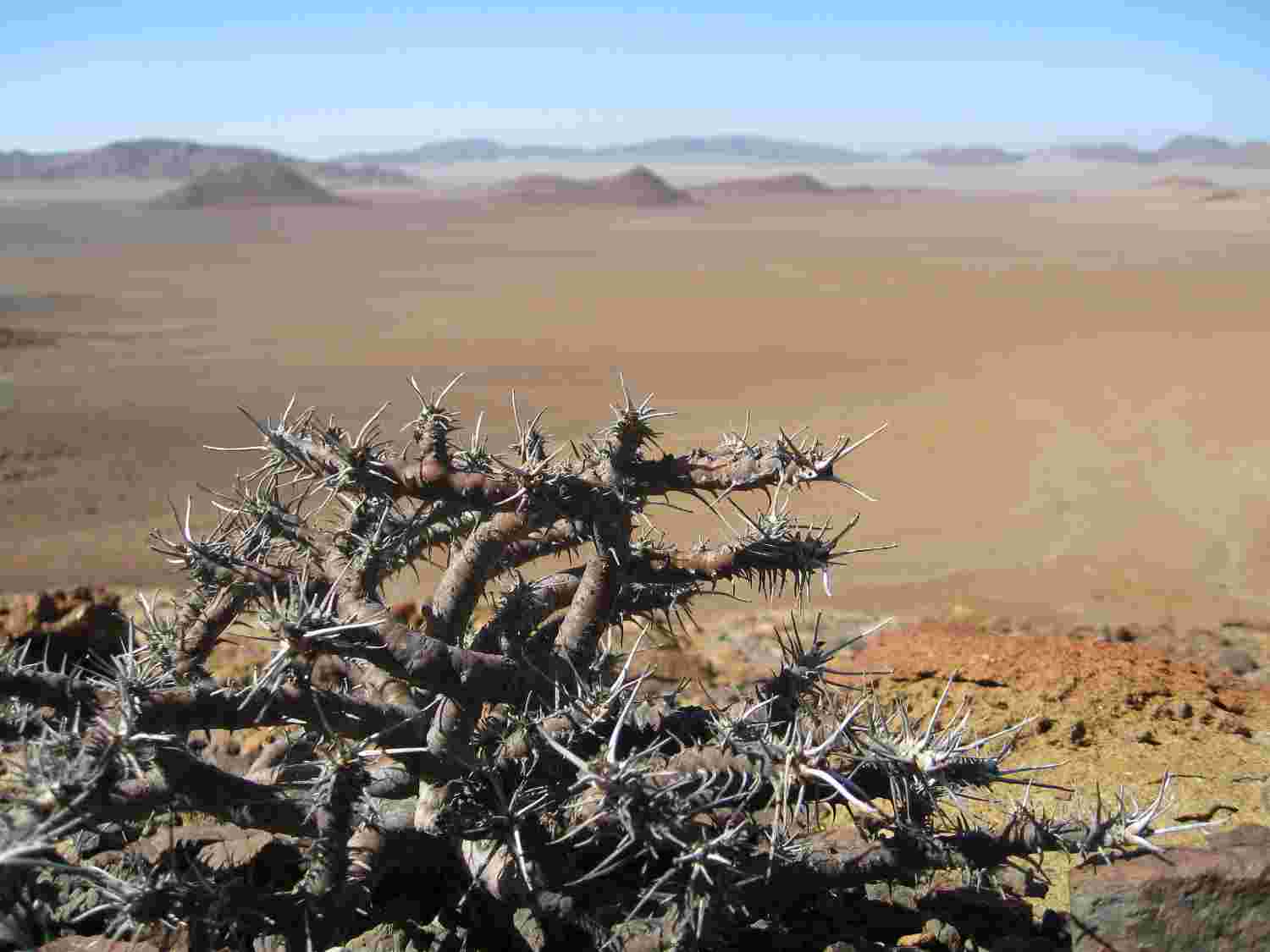 |
Christmas decorations in the Messum. A ‘Bushman candle’. This Namib plant makes a thick waxy bark that burns like a candle |
We thought it best to spend the first night at the Brandberg, mainly because there are roads leading to it and it would be a good launching place for venturing further west. There was no moon and so we were treated to the full galactic monty. The two satellite galaxies, the Megellanic Clouds were in clear view and the galaxy itself was so bright it was very difficult to make out the constellations and even Mars. The light from galactic centre, to the south east, lit up the side of the Brandberg. My nocturnal prostate trips did not need a torch.
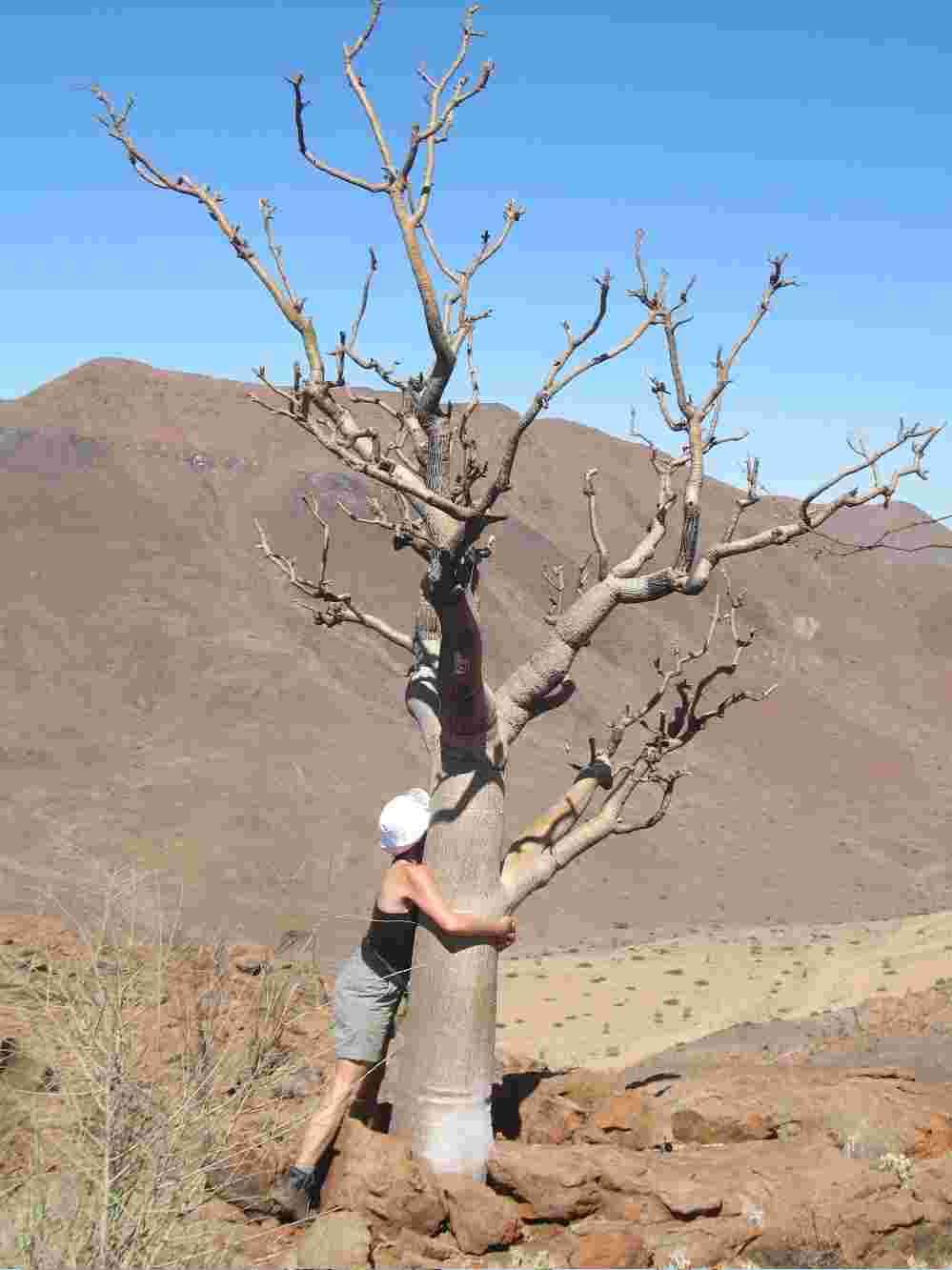
Moringa ovalifolia
A fine fat Moringa tree. Smooth bark, hot on the sunny side and cold on the shade side. This species of Moringa is endemic just to this area and a lot grow in the Brandberg. it is said that this is yet another tree out of whose roots, Namibians make coffee. Or, as Palgrave states. 'the bark, stem and roots are eaten by game and also by Africans'
Before we set out west the next day, we climbed up a foothill so that Santjie could hug a few trees.
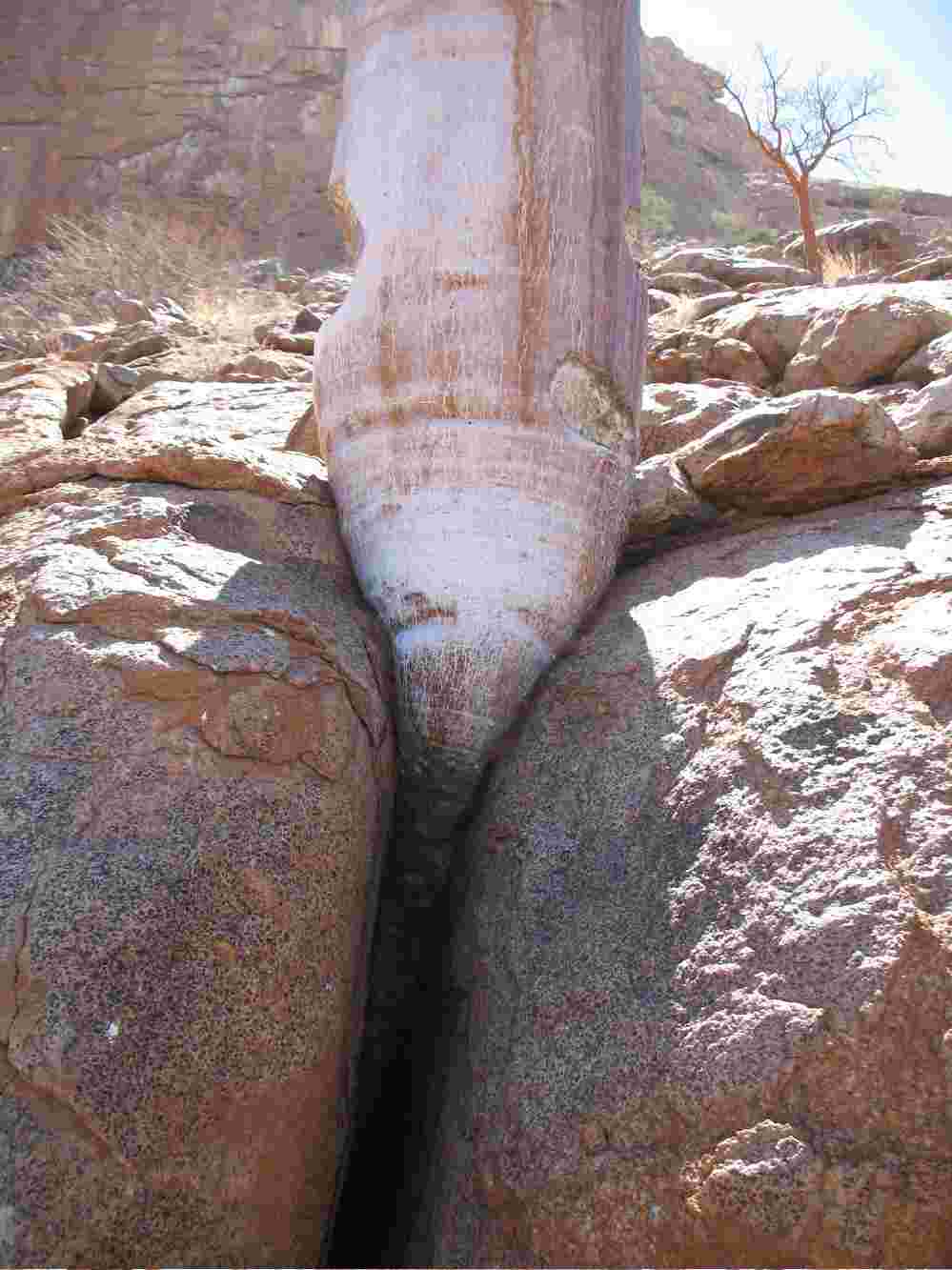 |
 |
| Its shoes pinch a bit | Bark folds - reminiscent of the view from behind of a number of the over-fed fat cats bottom left here. |
Getting from the Amis valley camp spot in the Brandberg to the Brandberg to the Messum would seem to be quite easy. You just follow the Messum riverbed where there is quite a well-marked track and only about 30km
The problem is that the river divides and only part of it flows through the crater. We, of course, took the wrong track.
Fortunately the trust we put in the old Landrover (and my old GPS) was not misplaced and eventually, after a bit of wandering we found both the crater and also the flowers we had come, at least in part, to see.
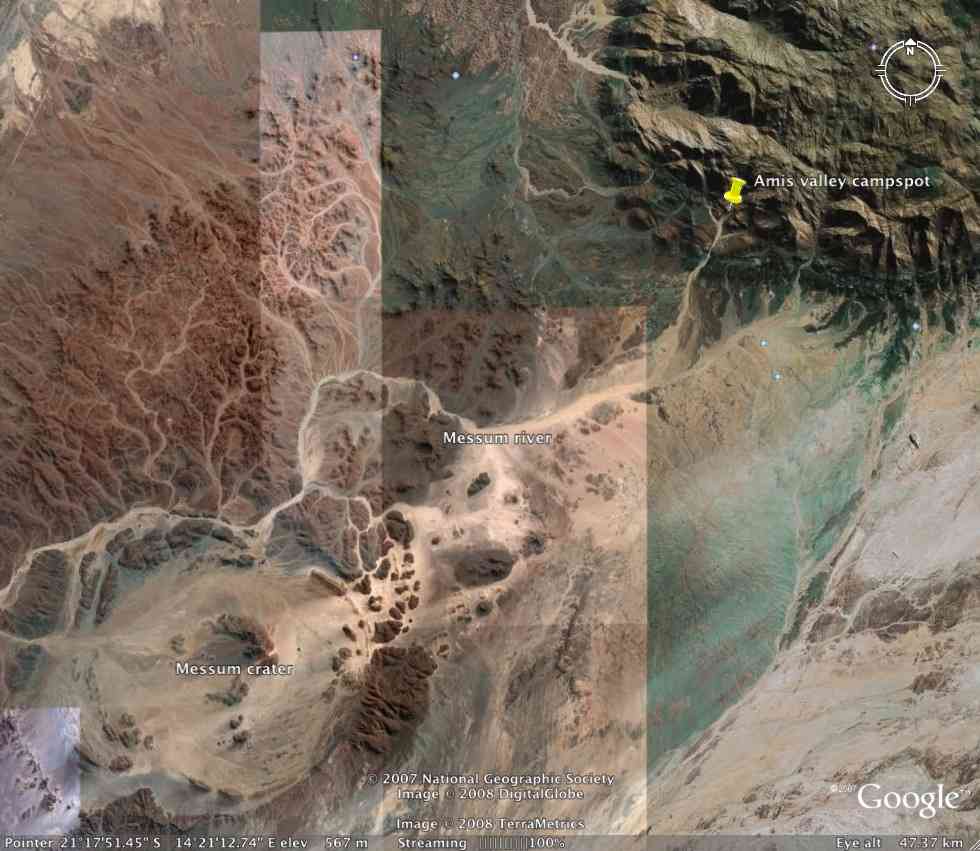 |

This panorama view is made up of 5 shots and extends about 180 degrees looking west towards the Atlantic. We are looking roughly at where Buenos Aires would now be if the Messum were still active and America had not drifted off. The two rings of distant hills that form the western rim of the crater can also be seen on the Google photograph. It was taken from the top of the hill just below the name 'Messum crater' on the Google map. .
Historic village
There is a historic village in the shelter of a granite koppie at the centre of the Messum.
About six houses can be seen in this view.
There is more about these people in John Kinahan's book 'Pastoral Nomads of the Namib Desert - The people history forgot'. Published by Capital press, Windhoek. Academic but very readble.
It looks like similar remains in the Amis valley where we camped in the Brandberg. These were inhabited until aroun the middle of the nineteeth century by pastoralists who moved in extended family units, wintering in the Brandberg where there was usually permanent water and moving onto temporary pastures in the Namib whenever it rained. There does not seem to be any source of water in the central Messum other than the river and the streams like this that occasionally flowed through the village. I could not see any signs of either pottery shards or sharpened stones that are common in the village sites of the Brandberg. Was this Messum site a very temporary one? |
 |
We could not find any rock paintings, although we were told there were some.
Rock art in this part of Namibia dates from before the pastorialist occupation. It was probably done by hunter-gatherer ancestors of the pastoralists. Painting seems to have largely ceased with the evolution of pastoralism.
There is generally little to hunt here and hunting on such a flat open plain must have been a challenge, even, as seems likely, if it was rather wetter in the past.
 |
 |
A close-up of one of the houses is shown on the left. This seems to be simply an open shelter from the blowing sand. More typical of the Brandberg are houses that are a ring of flat stones, presumably serving as a base for a wigwam kind of structure made from acacia branches and covered. One such house can be seen on one of the rock art panels in the Amis. There are no trees here, however, and no evidence that there may have been some in the past.
Some of the house remains are constructed in this way but they have been vandalised to make elaborate braai places by more modern itinerants (right). Quite close to this is a notice indicating that it is an archeological place of interest and we are asked not to move anything or dive there. Most people who come to places like this respect them but one or two individuals ruin it all for everyone else.
The flowers we came to see
Welwitchia Mirabilis
It is a desert plant that spends a millennium or two growing two leaves, a level of procrastination remarkable even by Namibian standards.
They dont grow anywhere else but here in the Namib, but on the edge of this crater they hang around in their thousands. The only thing they indulge in, apart from growing two leaves, is sex.
 |
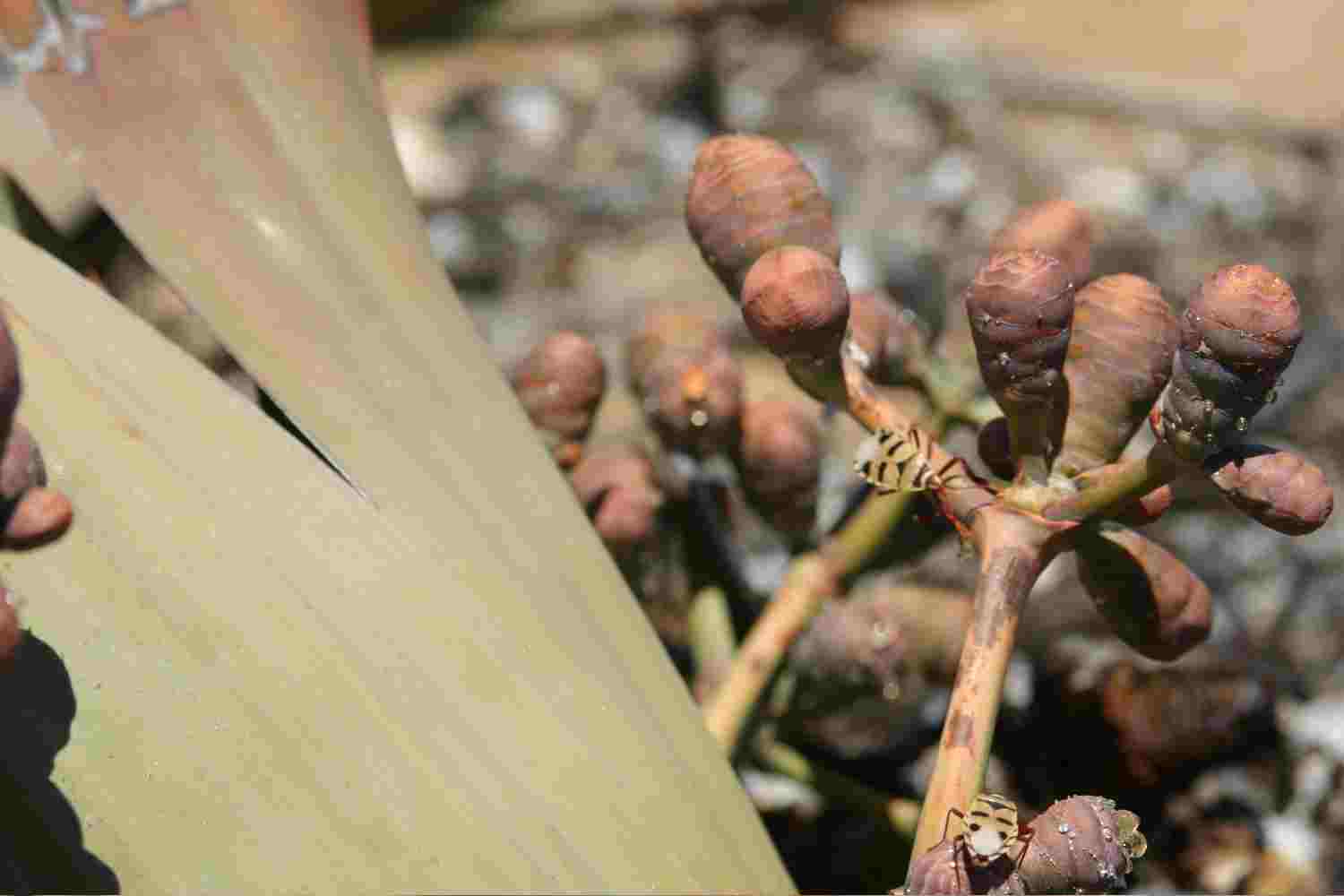 |
The Welwitchia sexes are different. The male is on the left and the female on the right. The little beetle is employed as a go-between.
Nobody seens to know whether they are conifers of flowering plants. They dont really have flowers; they have some kind of cone and they rely on the little spotted beetle for a union, which seems to happen successfully about two or three times a century. This was the week, mid-December, when this annual attempt at orgasmic activity reached its peak and we photographed them aplenty in flagrente.
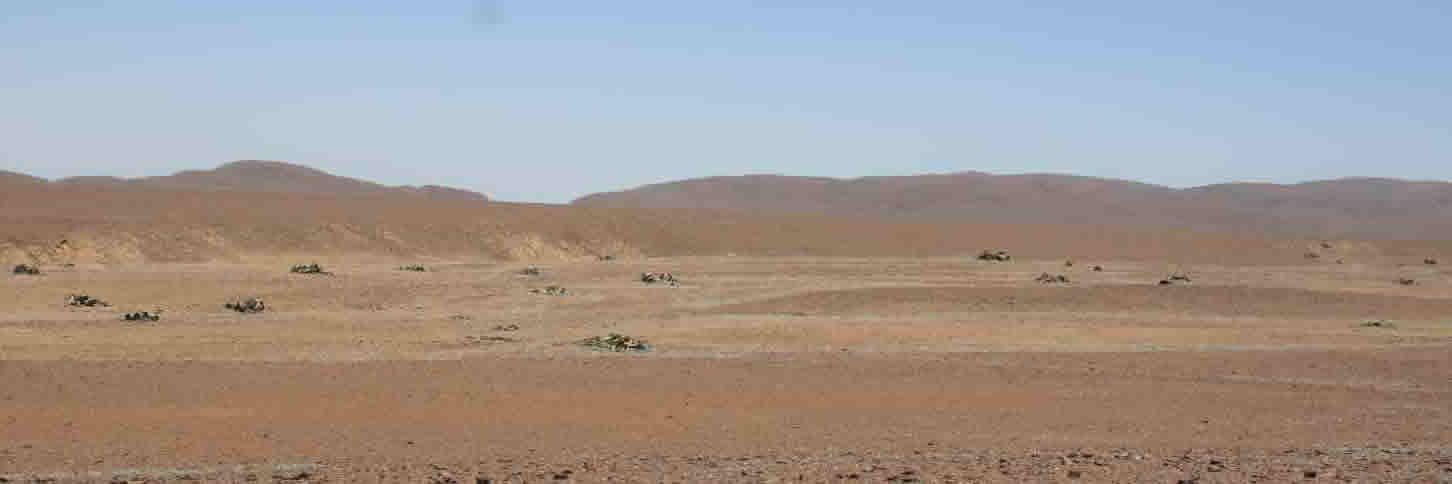
The Wellwitchia is best thought of as quite a large tree that grows underground except for the two leaves at the top. Its trunk goes down quite a long way before it splits into a series of tap roots that get water from the underground rivers in which they grow.
The bit we look at are its two leaves that grow a few centimetres each year–you can see the annual growth marks. It suffers from and extreme form of split ends.
Opinion seems to be divided about whether it gains water also from the condensation that covers it most nights. The onshore breeze here carries little water because the Benguela current is so cold; hence the desert. But what moisture there is condenses nighly in quite surprising quantities on anything that is a poor heat conductor, like the spare Landrover tyre.
And also, presumably on Wellwitchia leaves.They say that it then drips down onto the ground and is absorbed into a surface root system of the Wellwitchia. I dont believe it.
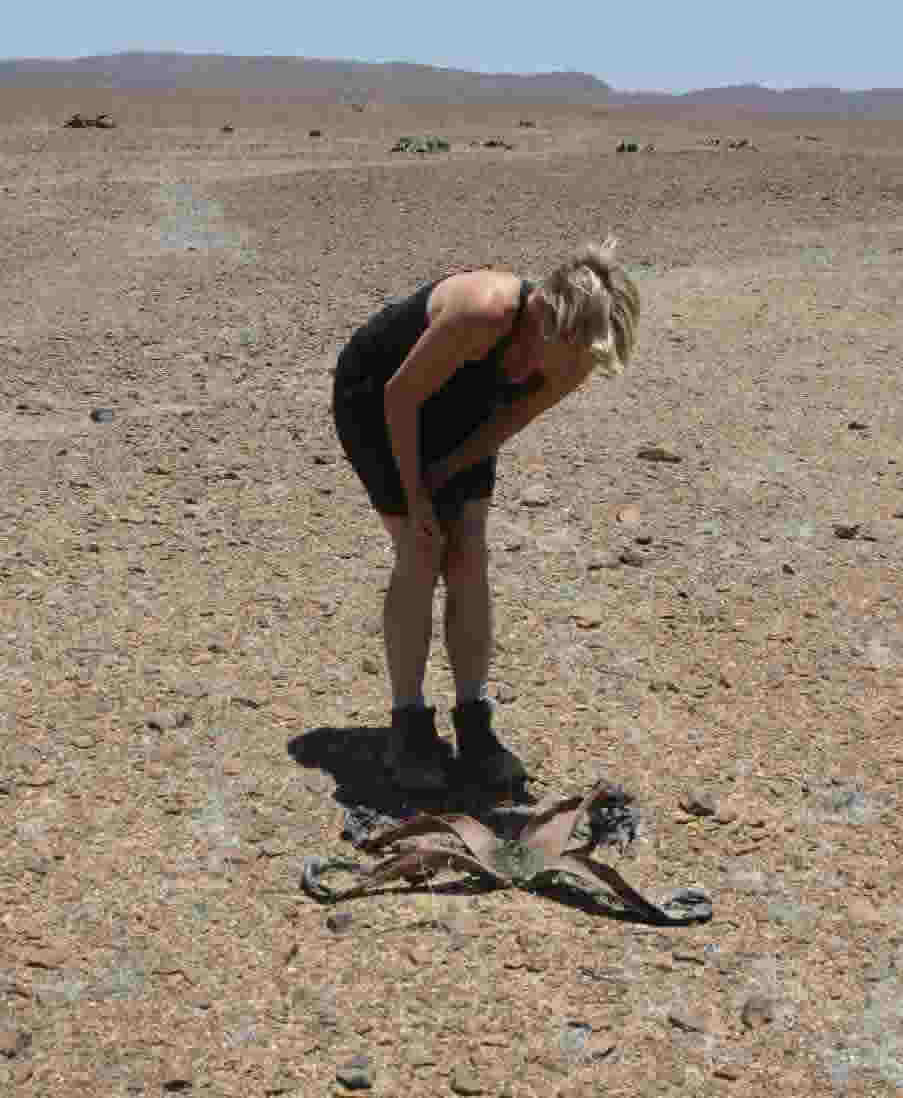 |
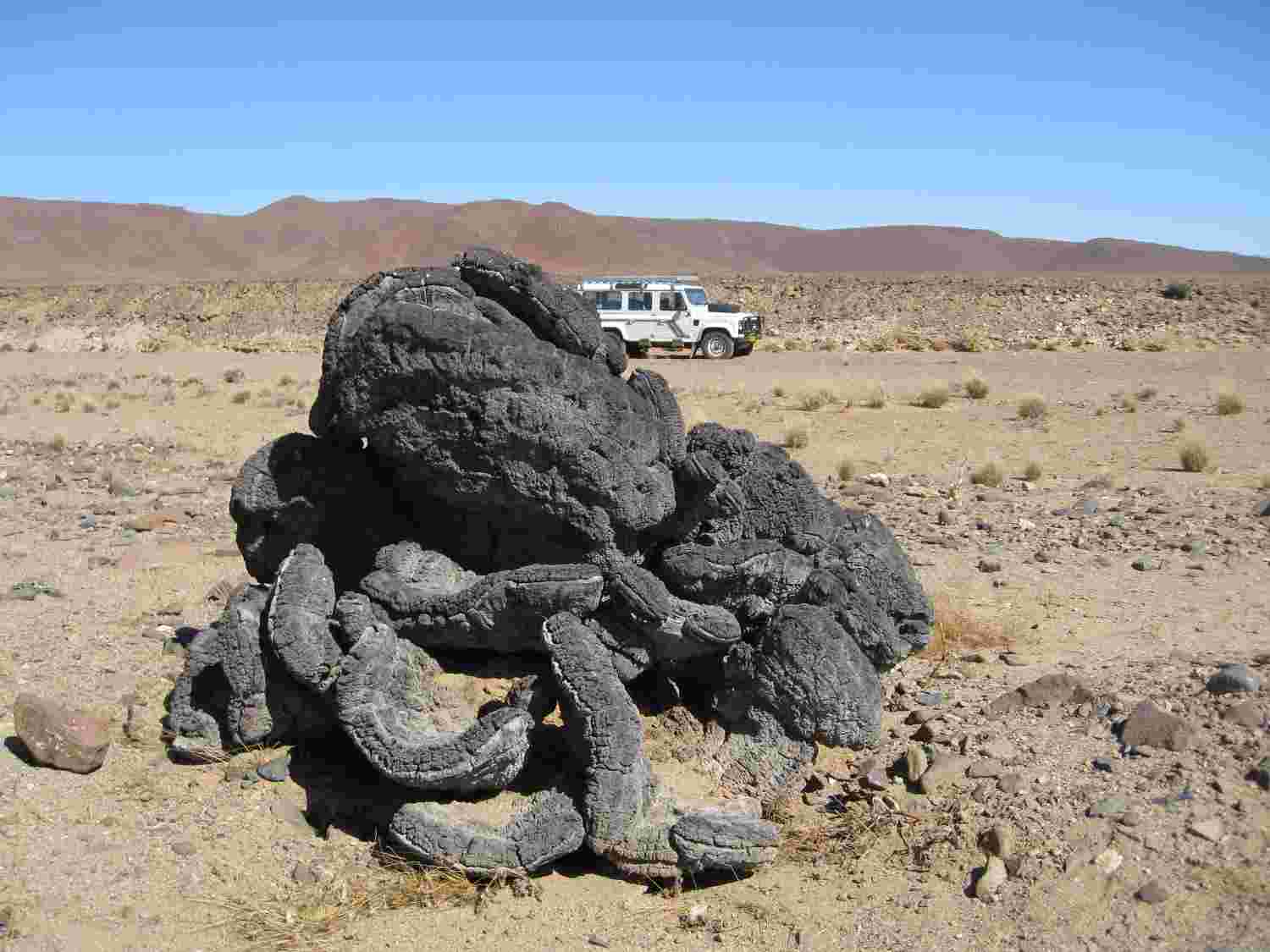 |
There were young Wellwitchias, old Wellwitchias and Wellwitchias that had long ago left this world. How long ago would be interesting to know as there were not many dead ones. In this climate a Wellwitchia stump like this probably lasts centuries rather than decades. All of which suggests they live on a different timescale from us; the mature one in front of me was probably quite big when, at the other end of the continent, Dido was hanging around in Carthage waiting for Aeneas. |
 |

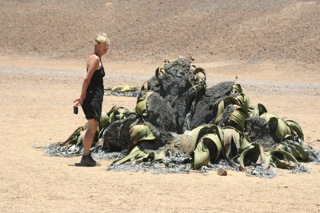
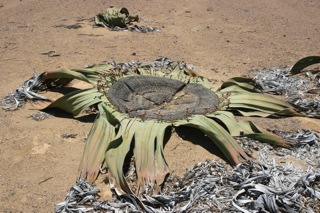
Desert Lichens
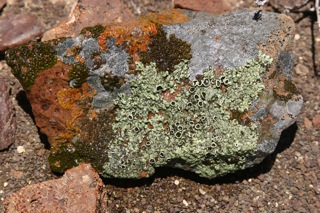 |
The desert surface in this northern part is held together with lichens. It is very fragile and easily damaged, particularly by off-road vehicles. Impressively, most people who visit, are careful not to harm the desert and stay on the tracks, walking on foot to look at things. A few dont, however, and this Christmas the desert has suffered a lot of damage from quad bikers who treat it as a playground. These lichens grow on stones in a large stony lichen field to the north of the crater. |
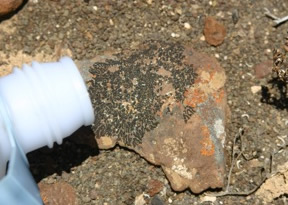 |
 |
Most of the time, like the Wellwitchia, they hang around as the years pass not doing very much. Put put a bit of water on them and they quickly open up and produce spores. Many things in the desert are adapted in this way; its important to make hay quickly when the rain falls

Life in craters can get pretty tough